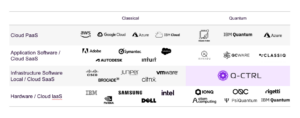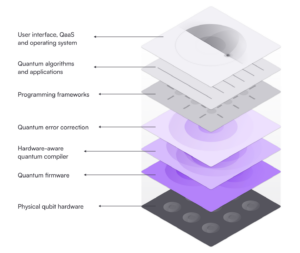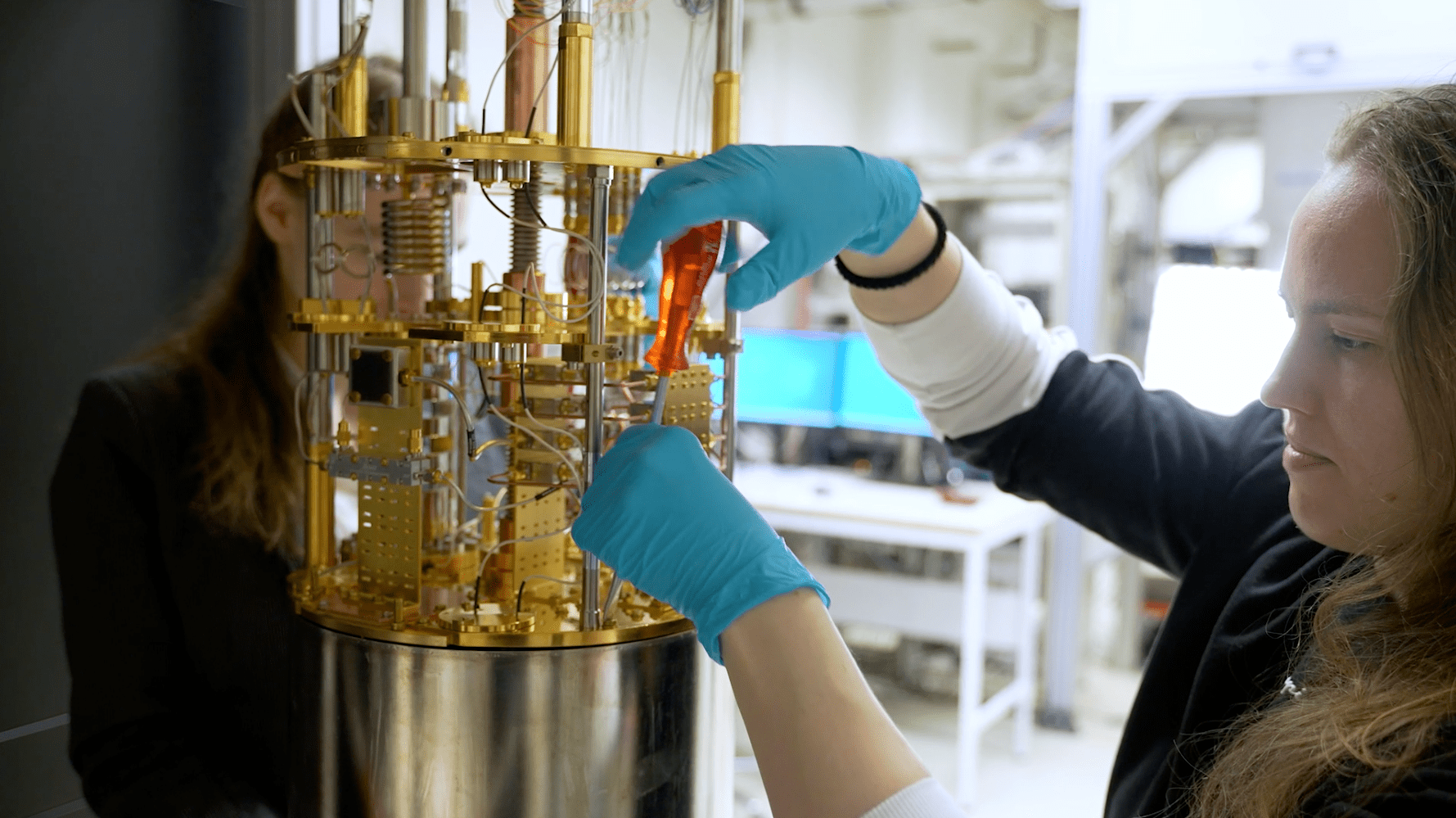Michael J. Biercuk and Aravind Ratnam
Quantum computers remain at an early stage, but the pace of technical progress points to a rapidly approaching horizon of “Quantum Advantage,” when it’s economically or technologically relevant to choose a quantum computing solution over the best conventional alternative for an important computational problem. In fact, depending upon how we interpret recent news this threshold may already be upon us.
Despite the level of interest from investors, enterprise, and governments, narratives about the emerging quantum industry have been somewhat one-dimensional, segmenting simplistically between quantum hardware and quantum software (algorithms and applications). A more nuanced view of the quantum industry shows that lessons learned from the development of classical computing carry over and reveal even broader potential opportunities than originally anticipated.
In particular we now see a new opportunity for value capture through the emerging Quantum Infrastructure Software segment encapsulating the “picks and shovels” providers who can help the quantum industry strike gold, and grow with it as it does.

In order to understand the value of this segment, we can align the various players in the quantum industry against strata already present in the conventional computing and software sector:
- Teams building quantum computing hardware are enabling cloud access to their systems, aligning them with Cloud Infrastructure as a Service (IaaS)
- Application and algorithm development and developer-tool focused teams are gravitating towards connecting their innovations to cloud-accessible quantum computers, and making them available via the cloud, in analogy with Application Software as a Service (SaaS)
- Hyperscalers like AWS, Microsoft, and IBM are building supporting cloud platforms for end users, aligned with Cloud Platform as a Service (PaaS)

In conventional computing infrastructure software is a key link – the technology that converts “bare metal” IaaS into useful computational tools for SaaS providers.
Q-CTRL is a category-defining business pioneering the development of the Quantum Infrastructure Software segment. Just like in conventional infrastructure software, Quantum Infrastructure Software helps other software teams unlock the value of their own IP and increases the value of cloud-accessible hardware.
Analogous examples in conventional computing can help us to understand the importance and impact of this segment. VMWare builds software tools that virtualize hardware, breaking the direct link between the computational system being used by an application developer and the actual physical computer hardware in use. This gives huge utility benefits to developers who can – all in software – port their custom configured virtual computers across different cloud platforms or servers, with no visibility into the “guts” of this process, and no need to hard-code for specific processors, memory sizes, etc.
Infrastructure Software is hard to copy, mission critical, sticky, and has a very large total addressable market. VMWare is now a $70B company which generated over $13B in last year’s revenue; other infrastructure software providers like Cisco ($227B), Citrix ($16.5B) and Juniper ($9B) have demonstrated the market worth of infrastructure software.
Q-CTRL is the first Quantum Infrastructure Software provider to emerge in the quantum industry. It provides “middleware” that is essential to expanding the utility of quantum computing hardware, improving the experience for application developers through abstraction, and increasing the value of the hardware platforms themselves by making them more user-friendly. This is quite distinct from “traditional” quantum software teams focused on crafting and deploying algorithms for end-users or consumers of quantum computing.
By analogy with VMWare, Q-CTRL’s Quantum Infrastructure Software virtualizes quantum computer hardware, breaking the link between base hardware characteristics and actual quantum computational power. Doing so massively improves performance, and expands the convenience, cost-effectiveness, and cross-compatibility of hardware to augment utility, ultimately reducing friction for enterprise end users.

Looking one level deeper, this capability is delivered in three key ways.
- Stabilize the hardware and reduce error in algorithms: All quantum computing hardware is highly susceptible to error, leading to failed algorithms – the hardware generally just outputs the wrong answer and varies tremendously day to day. The introduction of Q-CTRL’s Quantum Infrastructure Software reduces these errors by thousands of times, improving output quality and stability across use cases and over time to deliver reliable results. Research has shown an increase in hardware Quantum Volume – a measure of hardware capability – using error-reducing Quantum Infrastructure Software, and over 10X increase in achievable circuit depth.
- Expand the utility of small prototype systems: Current quantum processor generations vary not only in size but in performance and stability. Large systems generally have the highest performance but are difficult and expensive to access. Often, even for small test problems end users are forced (often through trial and error) to select expensive premium processors just because they come with better baseline performance. Customer demonstrations have shown that a moderately priced small quantum processor running Quantum Infrastructure Software could be made to perform indistinguishably from a large premium device, up to limits imposed by the hardware such as system size.. This allows more efficient application prototyping for quantum algorithm designers.
- Abstract hardware and build cross-compatibility between architectures: There is currently no standard instruction set or even hardware architecture in the quantum computing industry, adding major development and adoption roadblocks to enterprise users. This results in algorithms which may deliver exceptional performance on one system suffering massive degradation on another through inefficient translation (e.g. due to differing qubit connectivity or native physical gatesets). Achieving good performance has typically mandated hard-coding solutions for specific hardware systems using specialist physics insight, forming a major barrier to widespread uptake by enterprise development teams. By optimizing steps called compilation, layout selection, and hardware-aware transpilation, Quantum Infrastructure Software allows any algorithm to be executed with maximum performance in a manner where the details of execution – and even the hardware backend selected – can be efficiently abstracted away.
The net result is the delivery of greater value to quantum algorithm developers with improved convenience and reduced cost. Our most recent product uses AI to autonomously improve the usefulness of quantum computers without the user needing to configure anything or have any visibility into the arcane physics and algorithms powering this process; standard quantum software teams can focus on application development. Similarly, our AI-powered circuit ranker can automatically predict the best-performing of a combinatorially large set of logically equivalent maps between a quantum algorithm at the logical level and the specific qubits in use on or across target devices; users don’t need to consider the hardware backend at all in addressing their problems. Aside from the time-savings associated with better use of developer time, this technology also reduces quantum compute costs up to 100x by delivering enhanced performance while eliminating overhead in user-applied error mitigation protocols.
Early on, hardware providers looked to build tools and solutions taking on these challenges themselves. The paradigm of 100% vertical integration in the quantum industry has fallen away for two reasons. First, hardware development requires a specific way of working, and traditionally teams good at building hardware have struggled to also produce great software. Second, building QC hardware is tough enough – it’s just not reasonable to expect all innovations in the design, construction, and operation of these cutting-edge machines to come from a single organization. The emergence of cloud-accessible quantum computers has accelerated this trend, enabling specialist providers to develop and test their technology without the need to also develop the underlying hardware.
As with conventional cloud computing it’s best to leave mission critical tasks to focused teams with special expertise – just think of how we all rely on expert security providers to ensure platforms work robustly in a hostile environment.
Q-CTRL’s major value-add comes through just such expertise and focus. We operate the world’s largest team of experts in quantum control engineering, and have turned this into a unique – and transformational – software offering. In short, we can make quantum computer hardware do things that can shock even the teams that build the systems.
This is why IBM Quantum announced in May 2023 that through a new partnership, Q-CTRL’s performance-management Quantum Infrastructure Software will soon be offered as a native option on IBM Quantum machines.
There is a wealth of opportunity in this new segment that can deliver more value to QC algorithm developers and end users, and accelerate the field overall. Quantum networking and quantum security are two emerging areas where we expect new Quantum Infrastructure Software businesses to appear, but the future is wide open.
Segmentation of the conventional computing and software market has built a wide range of businesses that have changed the world: Amazon, Microsoft, Dell, Lenovo, Salesforce, Google, Meta, Juniper Networks, Cisco, VMWare, and on, and on.
Why should the future of quantum computing be any different?
It’s the right time to broaden our view of the quantum industry and see that we can target the creation of dozens of decacorn quantum businesses. Q-CTRL is excited to take just one of those slots by defining the Quantum Infrastructure Software category.
If you found this article to be informative, you can explore more current quantum news here, exclusives, interviews, and podcasts.















